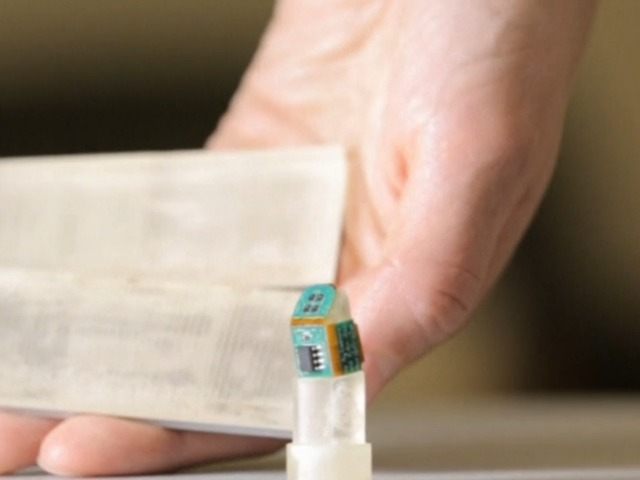Amputee Dennis Aabo Sørensen has made history as the first person to regain real-time sensation of touch using a bionic fingertip.
The technological breakthrough results from a collaboration between the Swiss Federal Institute of Technology and Italy’s Sant’Anna School of Advanced Studies. Led by Silvestro Micera and Calogero Oddo, the team of scientists directly wired nerves in Sørensen’s arm to electrodes connected to the machine-controlled artificial fingertip.
Dr Oddo described the process in detail:
The fingertip has miniature sensors inside that electromechanical sensors that are made in silicon that deform. The output of those sensors that produce electrical signals that are then converted using an artificial neural model that are spikes. Spikes are on off signals that stimulate the nerves through the neural interface.
The converted electrical signals were then delivered directly to Sørensen’s nerves. According to the study, a blindfolded Sørensen successfully recognized the different textures with a 96% accuracy.
When the scientists stimulate my nerves I could feel the vibration and the sense of touch in my phantom index finger…you can feel the coarseness of the plates, and the different gaps and ribs.
This isn’t the first gift of touch Micera has bestowed upon the 38-year-old resident of Denmark. In 2014, revolutionary sensory feedback technology developed by the Swiss professor allowed Sørensen to receive real-time sensory information with a prosthetic hand wired to the same nerves in his upper arm. With his visual and auditory senses suspended, he was able to grasp objects and detect their shape and softness for the first time since he had lost his hand in a fireworks-related incident nearly a decade earlier.
The experiment was repeated with non-amputees, resulting in 77% accuracy. The team eliminated the need for surgical implants by using fine needles to bridge a temporary connection between the patient’s median nerve and the artificial fingertip. To determine the degree of difference of touch sensation between a real finger and that of the bionic fingertip, the team of scientists tested the non-amputees with the bionic fingertip and then again with their own finger. Upon comparison of brain-wave activity recorded during both tests, the scientists discovered that activated regions of the brain were parallel.
The findings demonstrate the similiarity of information relayed via needles or implanted electrodes. Results of the research by Micera, Oddo, and their collaborative team has given scientists the ability to develop and safely test prosthetics on intact individuals, providing new and accelerated avenues to improve touch resolution in prosthetics.
“This study merges fundamental sciences and applied engineering: it provides additional evidence that research in neuroprosthetics can contribute to the neuroscience debate, specifically about the neuronal mechanisms of the human sense of touch,” says Dr. Oddo, head of Human Machine Nexus Laboratory at The BioRobotics Institute. “It will also be translated to other applications such as artificial touch in robotics for surgery, rescue, and manufacturing.”
For the Danish property developer, who has never lost the sensation of his missing hand, the experiment has personally given him sensations he hasn’t felt since his amputation. “The stimulation felt almost like what I would feel with my hand,” said an amazed Sørensen. “I still feel my missing hand, it is always clenched in a fist. I felt the texture sensations at the tip of the index finger of my phantom hand.”
Follow Nate Church @Get2Church on Twitter for the latest news in gaming and technology, and snarky opinions on both.

COMMENTS
Please let us know if you're having issues with commenting.